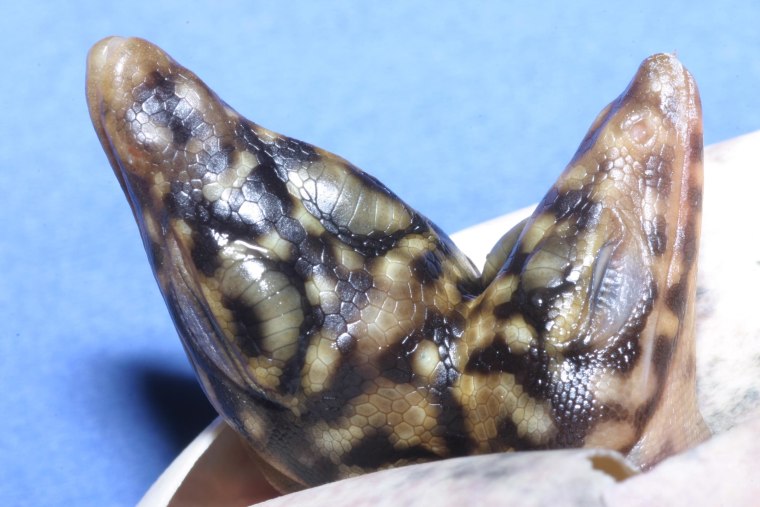In a first-of-its-kind case, a pair of conjoined lizards called Quince monitor lizards were discovered at a German zoo, according to a new report. The lizards were dead when they were discovered.
The animals were found in June 2009 in a clutch deposited in a terrarium at the Cologne Zoo, in Germany. Other cases of conjoined twins have been reported in reptiles such as turtles, crocodiles and other lizard species, according to the report.
The parents of the conjoined lizards were siblings that were kept together at the zoo. Another clutch from the same parents, laid in September 2009, included a dead, malformed hatchling.

"Interesting for us was that both clutches of the same pair comprised malformed offspring, which indicates that this probably did not happen coincidentally," said Mona van Schingen, a reptile expert at the University of Cologne in Germany and co-author of the report.
The lizards' heads and abdominal tissues were conjoined, but each had a body that was generally well-developed, including entire limbs and tails, according to the report. Both the conjoined lizards and the dead, malformed hatchling that was found in the other clutch had curved spinal columns, and the skin on their undersides had not fully formed, so their bellies were open and their internal organs were visible.
All three were smaller than the typical size of hatchlings of this species, van Schingen said. [Album: Bizarre Frogs, Lizards and Salamanders]
The Quince monitor lizard, Varanus melinus, which was described in 1997, is relatively new to science. Nearly nothing is known about the species' biology in the wild, said study co-author Thomas Ziegler, the curator of the aquarium and terrarium department at the Cologne Zoo. Almost all the information about this species comes from lizards in captivity, Ziegler told Live Science.
The lizards are 2.6 to 4 feet (80 to 120 cm) long as adults, and are native to Indonesia.
It is possible that the reason the lizards were conjoined was partly due to the low amount of genetic variation that stemmed from having parents that were siblings, according to the report.
The report was published online Dec. 21 in the journal Herpetology Notes.
— Agata Blaszczak-Boxe, Live Science contributing writer
This is a condensed version of a report from Live Science. Read the full report. Follow Agata Blaszczak-Boxe on Twitter. Follow Live Science @livescience, Facebook & Google+.
